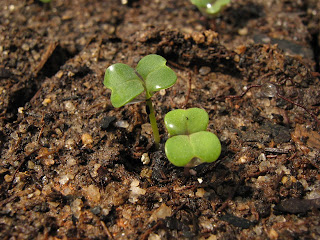
I'm already looking forward to next year's garden. We definitely learned a lot last season. Some things I've been thinking about:
Bed Width. We did double-wide beds in our garden last season, mostly because we had our beds shaped by a tractor. This seemed to work well for strawberries and beans, but for potatoes, cabbages, broccoli, and a lot of other things, I think it simply left too much room for weeds to grow up in the middle.
Blight. Like a lot of growers, our experience with early blight last year was probably worse than usual, but I still think we're definitely going to experiment with some organic fungicides next year.
Materials. Every year I garden I look back and think about how much easier it would have been if I had collected the right materials beforehand. When I was living in New Jersey I had a community garden plot with access to an almost unlimited supply of compost and wood chips. You don't realize how valuable this stuff is until you buy it and truck it in yourself, or until you spend your weekend afternoons shoveling a free pile into the back of a pickup truck. I'm still not sure how we're going to source all the materials we'll need next year, since late winter and early spring will mostly be devoted to digging tree holes.
More Squash Earlier. I'm always disappointed by transplant shock in squash, and always impressed by the damage done by squash vine borer. Next year I'd like to direct-seed more squash (if we have the space) and be better about controlling the borer (which wasn't too bad this year).
As we look forward to getting chickens, I'm always thinking of ways they might be used in the garden. Chickens aren't stupid and will eat anything that tastes good. They'll peck at melons, tomatoes, and they'll wreak havoc in mulched beds in search of insects. But I've always wanted to release chickens into a garden after the harvest to control overwintering insects like vine borer pupae or Colorado potato beetles. I think it might be worth a try.
More on our other projects later.

















































